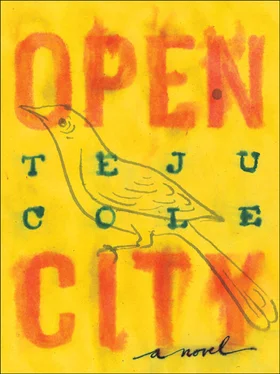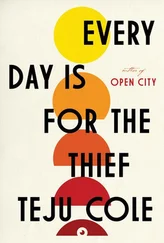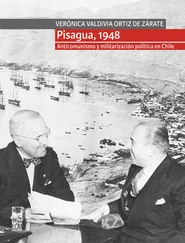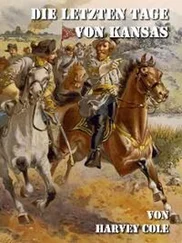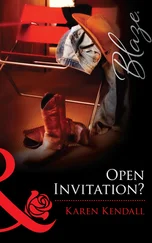Teju Cole - Open City
Здесь есть возможность читать онлайн «Teju Cole - Open City» весь текст электронной книги совершенно бесплатно (целиком полную версию без сокращений). В некоторых случаях можно слушать аудио, скачать через торрент в формате fb2 и присутствует краткое содержание. Год выпуска: 2011, Издательство: Random House, Жанр: Современная проза, на английском языке. Описание произведения, (предисловие) а так же отзывы посетителей доступны на портале библиотеки ЛибКат.
- Название:Open City
- Автор:
- Издательство:Random House
- Жанр:
- Год:2011
- ISBN:нет данных
- Рейтинг книги:5 / 5. Голосов: 1
-
Избранное:Добавить в избранное
- Отзывы:
-
Ваша оценка:
- 100
- 1
- 2
- 3
- 4
- 5
Open City: краткое содержание, описание и аннотация
Предлагаем к чтению аннотацию, описание, краткое содержание или предисловие (зависит от того, что написал сам автор книги «Open City»). Если вы не нашли необходимую информацию о книге — напишите в комментариях, мы постараемся отыскать её.
But it is not only a physical landscape he covers; Julius crisscrosses social territory as well, encountering people from different cultures and classes who will provide insight on his journey — which takes him to Brussels, to the Nigeria of his youth, and into the most unrecognizable facets of his own soul.
Open City — читать онлайн бесплатно полную книгу (весь текст) целиком
Ниже представлен текст книги, разбитый по страницам. Система сохранения места последней прочитанной страницы, позволяет с удобством читать онлайн бесплатно книгу «Open City», без необходимости каждый раз заново искать на чём Вы остановились. Поставьте закладку, и сможете в любой момент перейти на страницу, на которой закончили чтение.
Интервал:
Закладка:
I was already late for my meeting with Parrish, who had been recommended to me by a colleague. But I left the pharmacy and wandered around the area, and tried to calm myself down. It was cold out, the sunshine giving no warmth as a breeze came stiffly off the East River two blocks away. The clouds in the bright sky were small and numerous, and ruffled like breaking waves. I shivered, and tried to ignore the nervousness, hoping it would simply float away. I went down to Hanover Square and twenty minutes later, having no definite number in mind, went to another machine, this one in the lobby of a bank. I tried the withdrawal again, hoping that the memory in my fingers, their familiarity with the pattern, might bail me out, as it sometimes did in the case of phone numbers. I was surprised the machines permitted so many attempts. In any case, all failed, and I was left with a handful of printed receipts. I had kept thinking that the number was 2046. But that wasn’t it; that number came from the title of the film by Wong Kar Wai. The number I was after was something similar, had been picked even before the film was made, but it was 2046 that kept echoing in my head.
When I finally sat down with Parrish, I told him that I had neglected to bring my checkbook. I said nothing about the cash machines. He was solemn, and as he adjusted his cuff links, I had the feeling of having disturbed a carefully calibrated universe. I apologized, and assured him I would put the check in the mail right away. He shrugged, and I signed the tax paperwork he had prepared for me. I was awed by this unsuspected area of fragility in myself. It was an insignificant portent of age, the kind I tended to smile at in others, the kind I took as a mark of vanity. I thought of the few white curls that had sprung up and were now nestled in the black mass of my hair. I used to joke about them, but I knew also that the entire head of hair would someday change color, that the white strands would multiply, and would win eventually, that if I lived to old age, like Mama, there would be hardly any of the black ones left.
I went down Broadway, past the old Customs House, and down to Battery Park. It was a clear day and I could see right across to Brooklyn, to Staten Island, and the glimmering green figurine of the Statue of Liberty. The Tetris-like line of buildings sat in the still afternoon air. The park brimmed over with the noise of children too young for school. Their mothers fussed around them in the playground. The creak-creak of the swings was a signal, I thought, there to remind the children that they were having fun; if there were no creak, they would be confused. This had been a busy mercantile part of the city in the middle of the nineteenth century. Trading in slaves had become a capital offense in the United States in 1820, but New York long remained the most important port for the building, outfitting, insuring, and launching of slavers’ ships. Much of the human cargo of those vessels was going to Cuba; Africans did the work on the sugar plantations there.
In profiting from slavery, the City Bank of New York was not unlike the other companies founded by merchants and bankers in the same time period — the companies that later became ATT and Con Edison emerged from the same milieu. Moses Taylor, one of the world’s wealthiest men, had joined the board of the City Bank in 1837 after a long and successful career as a sugar merchant. He became the president of the bank in 1855, and served in that capacity until his death in 1882. Taylor had helped fund the war effort on the Union side; but he had also made massive profits from brokering the sale of Cuban sugar in the port of New York, investing the profits of the sugar planters, facilitating the processing of the cargo at the New York City Customs House, and helping finance the acquisition of a “labor force.” He had made it possible, in other words, for plantation owners to pay for the purchase of slaves; this he did in part by operating his own ships. He had six of them sailing the high seas. Taylor and other bankers like him knew exactly what they were doing, and their optimism paid off. The profit margins were irresistible: a fully outfitted slaving ship costing around $13,000 could be expected to deliver a human cargo worth more than $200,000. The New York Times noted in 1852, as the City Bank brought in its greatest profits, that if the authorities pleaded that they could not stop this profiteering, they were simply confessing their own imbecility, and that, if it was a matter of will, the moral guilt they were incurring was equivalent to that of slave traders themselves.
The circuit from the old Customs House to Wall Street, and then down to South Street Seaport, was a distance of less than a mile. The Customs House faced Bowling Green, which had been used in the seventeenth century for the executions of paupers and slaves. In a tarred space in the park, along an avenue bordered by sturdy, heavy-headed elms, Chinese women danced in formation. There were eight of them, all in casual clothes. One was young, maybe in her thirties. All the others had gray hair, and there was one who was especially old and wise-looking. Their calisthenics was accompanied by vaguely martial pop music blasted from a radio. The young dancer led the group. Her movements were exaggerated. Each time she swept her arms, the too-long sleeves of her baggy pink jacket tousled calligraphically. The others followed easily, through points, swoops, quarter turns in one direction, half turns in the other. She was graceful and beautiful. But when the music stopped and the dancers paused, she did not look beautiful. The beauty had all been in her movement.
Their pause let me hear the other sound present, that of an instrument being played at the opposite end of the park. I wanted to get closer to it, and so I walked under the arbor of elms, passing by rows of concrete chess tables, which were oases of order and invitations to a twinned solitude. But no one sat at them or played chess. Around the tables, where they sank into earth, moss grew, spreading up the concrete and into the ground so that it seemed as if the chessboards had grown roots. I walked under the trees, past the creak of children’s swings and, as I moved closer to the end of the arbor, I could make out the sound of an erhu. The line was breathy and nimble, the precise nimbleness of an old-fashioned thing. How clear its sound in the park, how unlike the whine the same instrument made when it was played by a subway busker competing with the screech of subway trains.
When I reached the other side of the park, I saw that there were actually two erhu players, not one. They were playing in unison, seated together on a stone ledge, and standing, facing them, was a young woman singing. A small group near the musicians, three women and a man, all past middle age, talked and stretched. One of the women carried a child in her arms and played with it, and as she walked around slowly she pointed her feet to the grass ahead of her, first one, then the other. Her deliberate movements were like a delayed shadow of the dancers’. I sat in the grass for a long while listening to the erhu players and the singer. It was cold. The singer sang softly, matching the bowed strings note for note. The players nodded to each other at the accents. I thought of Li Po and Wang Wei, of Harry Partch’s pitch-bending songs, and of Judith Weir’s opera The Consolations of Scholarship , which were the things I could best connect to this Chinese music. The song, the clear day, and the elms: it could have been any day from the last fifteen hundred years.
The Times had said, in the obituary I read that day, that V. wrote of atrocity without flinching. They might have said, without flinching visibly, for it had all affected her far more deeply than anyone’s ability to guess. I could hardly imagine the kind of raw pain her family — her husband, her parents — would be experiencing. I returned to the knoll in the park, where I had come in. The dancers had started again. Many of them, I now noticed, wore red or pink. I could not remember if red was lucky in Chinese culture. The thin sound of the erhu still slithered in among the drums of the dancers’ tape player, and it seemed to summon to my mind’s eye the long-ago spirits that V. had been so concerned to honor in her work. Turning away from the dancers, and taking in the expanse of the bay once more, I sat on a green wooden bench. A curious junco, black on its upper half and white on the lower, hopped up to my feet. It was tiny, and soon darted away. There was another man on the bench, dressed in a linen suit, with carefully polished shoes, and a straw hat: summer clothes on a winter’s day. His shirt was yellow and his tie dark brown — my train of thought was suddenly interrupted by the laughter of the Chinese women behind us. His mustache was white and neatly trimmed. The man read El Diario , seriously and slowly. We sat there, the two of us, and I looked over the green park. We did not acknowledge each other’s presence, though I had a sudden urge to tell him all about V.’s life, the depth of her work, her tragic death. We simply sat, and the day rolled down the knoll before us and drifted upward across the grass, and across the water, with its busy crisscrossing ferries, and southward, toward the Statue of Liberty.
Читать дальшеИнтервал:
Закладка:
Похожие книги на «Open City»
Представляем Вашему вниманию похожие книги на «Open City» списком для выбора. Мы отобрали схожую по названию и смыслу литературу в надежде предоставить читателям больше вариантов отыскать новые, интересные, ещё непрочитанные произведения.
Обсуждение, отзывы о книге «Open City» и просто собственные мнения читателей. Оставьте ваши комментарии, напишите, что Вы думаете о произведении, его смысле или главных героях. Укажите что конкретно понравилось, а что нет, и почему Вы так считаете.
